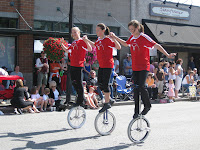 Rehabilitation of the coach 218 has been underway for two years now. This comprehensive project is addressing nearly every aspect of this 1912-built coach to prepare it for its return to passenger service.
Rehabilitation of the coach 218 has been underway for two years now. This comprehensive project is addressing nearly every aspect of this 1912-built coach to prepare it for its return to passenger service.The Barney and Smith Car Company applied everything they knew about coach building to the 218; it was one of the last wooden coaches built for service on an American railroad. This allowed it to reliably serve as a coach for the Spokane, Portland and Seattle Railway for nearly 40 years, and then for another 35 years as a dormitory for track work crews.
Work efforts to date have completed replacement of floor sills, roof carlines, lower roof decks, all missing or damaged window posts and studs, repair of carbody blocking, and repair of the letter board. Application of new exterior cladding/siding is now underway and approximately 25% of the carbody application is complete. Thousands of hours have been contributed by project volunteers including Alan W., Roger S., Hugh H., Bob M., Bob Mc., Russ S., Mike G., Kaila, Dan D., George H., Chuck S., Dan C., and Chuck M.
Rehabilitation efforts will continue into 2010 with substantial completion planned by summer 2010.













 Weyerhaeuser Timber Company White River Branch #1
Weyerhaeuser Timber Company White River Branch #1




















.jpg)









 Day Out With Thomas has been a successful event at the Northwest Railway Museum for eight seasons. This past weekend was the first of two for this year's event and by all accounts it was a roaring success.
Day Out With Thomas has been a successful event at the Northwest Railway Museum for eight seasons. This past weekend was the first of two for this year's event and by all accounts it was a roaring success.

